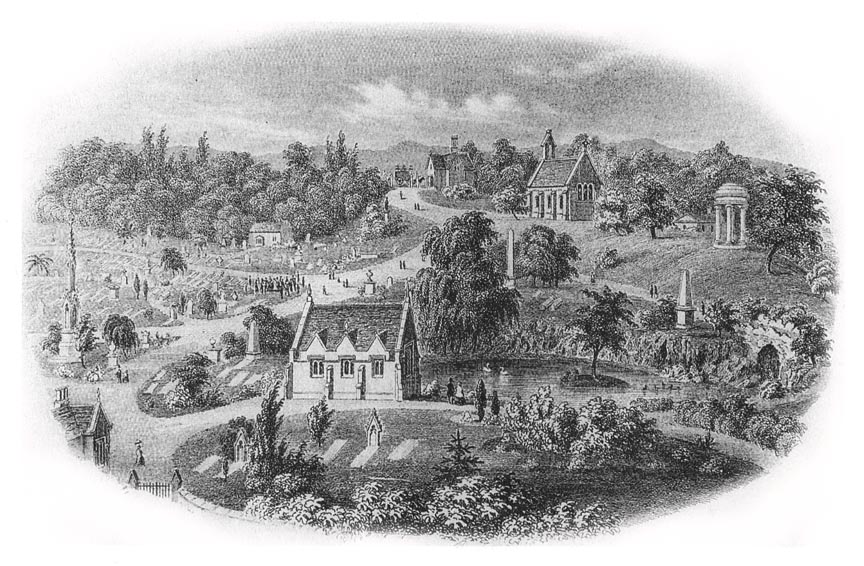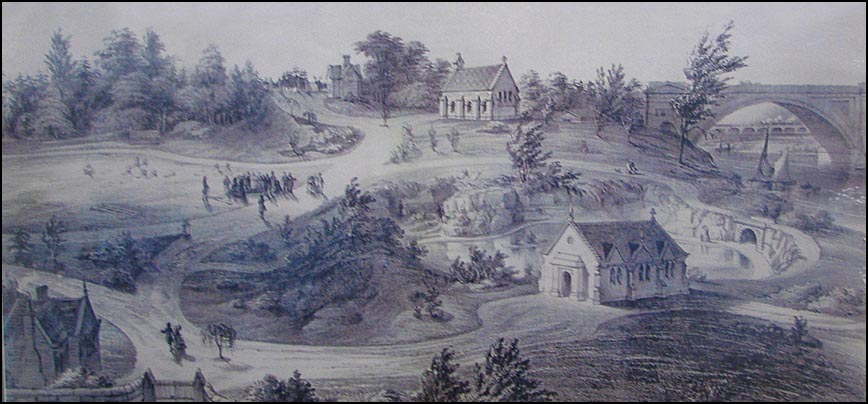|
Overleigh Gallery 13 |
A
Virtual
Stroll
Around
the
Walls
of
Chester Some Notable Memorials in the Overleigh Cemetery |
|

Here is a lovely old engraving of the Overleigh Cemetery showing how it appeared in its early days, around the year 1855. Notice also the rustic bridge on the far right of the picture. This still exists, albeit now completely hidden by dense undergrowth and beneath which tramps are accustomed to sleep. It once crossed an artificial stream which was cut through from the nearby River Dee to service the man-made lake. Before the establishment of the cemetery, a broader version of this waterway was used to ferry the stones from the extensive quarry which once existed here. Despite a considerable degree of neglect, the wonderful Overleigh Cemetery remains a most pleasant and peaceful spot which you should definitely find the time to visit when you visit Chester!
|

Here is another interesting early view of the cemetery- actually, judging by the distinct lack of burials, earlier than the one above. As with the first view, a horse-drawn hearse waits at the gates and a group of mourners gather around a graveside, but the trees are smaller and the water level in the lake is lower, producing a 'beach' around its edge. |
Grosvenor Bridge & Overleigh Cemetery | Cemetery Gallery Introduction | Overleigh Gallery 15 | The Overleigh Cemetery Database Online
Top of Page | Site Index | Site Front Door | Chester Stroll Introduction